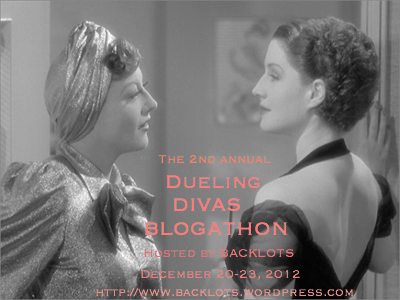
The final day of the TCM Classic Film Festival was by far the lightest in terms of screenings, but I also found it to be among the most enjoyable. One of the wonderful things about this festival, speaking for those of us who write about classic film, is that there is never any shortage of community here. The classic film writers’ world is quite a tight-knit one, and I found myself constantly surrounded with fellow bloggers and friends comparing schedules and trying to coordinate screenings, chatting in line about Barbara Stanwyck and Irene Dunne, and updating each other on what’s new on our blogs. The TCM Classic Film Festival is known for valuing bloggers, so many of us in the online classic film community received credentials this year and it was nice to put faces to names, and reunite with those I saw last year.

The first showing today was a repeat, a movie that had sold out in a previous time slot and they scheduled it in another to get more people in. It was a Ginger Rogers movie called 5th Ave Girl, directed by Gregory La Cava (of My Man Godfrey fame) and co-starring Walter Connolly, telling a story about a young woman who is hired by a lonely man to live in his house with his wife and children, and make his life a little less boring. It was not, in my opinion, a hugely successful effort, but it is a feel-good movie and it showcases Ginger’s ability to do some pretty top-notch deadpan comedy.
Interestingly, it was made in 1939, the year known as “the best year for movies,” alongside Gone With the Wind, The Wizard of Oz, Mr. Smith Goes to Washington, and Stagecoach. But in those days, studios were an essential factory line for movies, and it’s sobering to think that even in a year like 1939, the sheer amount of movies coming out of Hollywood ensures some troublesome ones. Though it was not a bad movie, it was rather slow with a bit of a loose plot that I found tedious. It is one of the few films I’ve seen at festival that I haven’t particularly liked.

Loretta Young and Walter William in EMPLOYEES’ ENTRANCE.
Next up was Employees’ Entrance, a 1933 film about a corrupt and evil boss that uses people and then throws them out. It stars Warren William as the evil boss and a young Loretta Young as the wife of his next-in-command. The boss is such a tyrant that he won’t let his employees get married, so the two have to keep their marriage secret, and the movie is about their lives and those of everybody else who is privy to the antics of this deranged person.
One of the highlights of the Employees’ Entrance screening was an informative and entertaining lecture about the pre-Code era from the president of the Film Forum in New York City, Bruce Goldstein. Goldstein gave a witty and fun overview on what the pre-Code era meant for Hollywood, and referenced several strong pre-Code films and the strong women characters that are indicative of that era.
As my readers know, I have a real fascination with the pre-Code era and I have just learned that TCM will soon be having a tribute to the women of pre-Code Hollywood, who make up some of the most exciting characters ever to be seen onscreen. Stay tuned for more details as they become available, as I will be doing a series on Backlots related to this.

Rita Hayworth and Orson Welles in THE LADY FROM SHANGHAI (1947).
My final screening of the festival was a movie that I have had the privilege of seeing before on the big screen, but this was a world premiere presentation of a new digital restoration that I was anxious to see. It was The Lady From Shanghai, a movie that presenter Eddie Muller called “noir poetry,” directed by Orson Welles and starring his recently separated wife Rita Hayworth opposite himself. The movie is notable for the brilliant “hall of mirrors” scene, and for the surprise of seeing the beautiful Rita Hayworth with short blonde hair–as well as the magnificent directing of Welles and his innovations in cinematic technique. The plot is a bit muddy, but in this case it doesn’t much matter because the focus is primarily on the visuals and Welles’ beautiful manipulation of the camera.
The restoration was gorgeous. There are some mixed feelings within the classic film community about digital restorations, and in my opinion it’s possible for a film to be “over-restored.” A few years ago I had the privilege of seeing a new digitally restored print of Pabst’s Pandora’s Box, one that was hailed as being such a superb restoration that it was near flawless. And it was a flawless restoration. To my mind, too much so. It looked computerized in how perfect it was, and it didn’t look like it came from film stock. It turned me off a little. But this one was simply a pristine clean-up–it was still clear that this was a movie that had been shot on film, and it was just the restoration that was done digitally. I enjoyed it quite a lot.
And that was the end of the TCM Classic Film Festival. I spent the rest of the evening at the closing night party, talking to friends and preparing to miss them until next year. But the good news is that we all know each other online, so it’s only goodbye to faces–not goodbye to people. Thank goodness for the internet, keeping us all connected though miles away.
A huge thank you to TCM for allowing me to attend this festival, to Chelsea Barredo for all her help with the red carpet credential, and to all the wonderful people I met and reconnected with this year. Here’s to the next one!


































_03.jpg)

